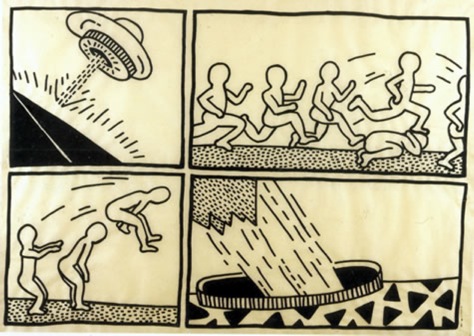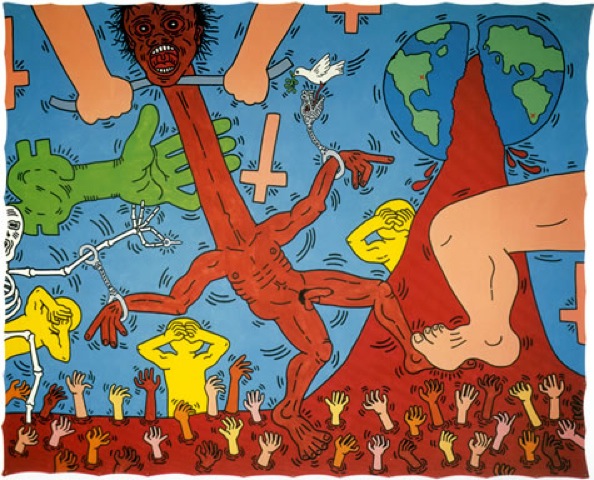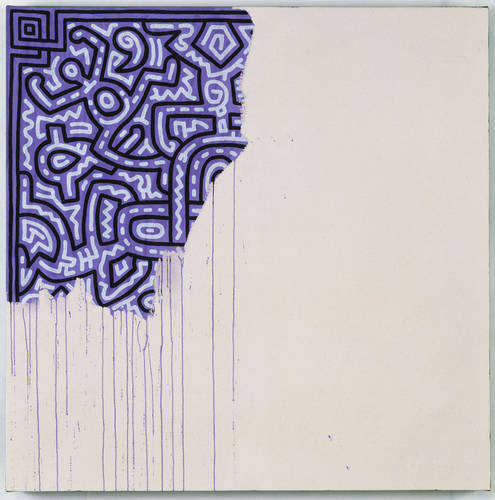Co-hosted by Musée d’Art Moderne de la Ville de Paris and Centequatre in Paris, The Political Line is one of the largest retrospectives of Keith Haring’s work, comprising over 200 works on paper and an impressive series of sculptures spanning his career from 1978 to his untimely death in 1990.
For Haring, the making of art was a public performance, its outcome accessible to all and its content topical. As a way to pay tribute to the activism in his art, A Political Line is thematically divided in response to Haring’s reoccurring subjects of social justice, ranging from his opposition of excessive state control and abuses of capitalism, to racism, religious dogma, threat of nuclear war and the vices of mass media. His final campaign was for safe sex amongst homosexual men, which began in 1988 when he was diagnosed with HIV.
Haring’s works are defined by a frantic and impulsive energy that repeats itself in figurative outlines and gestures that loop into one another emphasizing a sense of urgency in the same manner that one would use bold or capital letters in text. Universally used signs and symbols are placed within a new context, provocatively revitalized by a hard-hitting vigor. A barking dog is humanized as the evil leader of the pack, a crawling baby radiates innocence, snakes and spaceships suggest apocalyptic hell, and green rivers of envy denounce the supremacy of the dollar.
The use of caricatured figures and ironic humor in Haring’s early works, like Untitled, 1981 make them hopeful in their critique, reflective of a rebellious youthful energy. But his later works show a growing despondency in his own idealism. Although the sharpness of critique never lightens, the visual language discerns a change toward darker commentary. Paintings of monstrous creatures spewing consumer commodities or a bleeding globe as seen in Michael Stewart– USA for Africa, 1985 proliferate more than the witty collages of newspaper cutouts and homoerotic studies.



The exhibition serves as a retrospective of political thought in America and its active subversion through the 1980s, witnessed and animated in the streets, in clubs or in subways. Perhaps it is a timely reminder; a way to question today’s economic recession and political unrest- sentiments behind the Arab Spring or the Occupy Movements?
While Centquatre hosts monumental works, including the 25 ft. high arched panels Ten Commandments, 1985, a stark personal take on the depravity of religious faith and lifestyle; the exhibition’s themed sections at the Musée d’Art Moderne de la Ville de Paris end with Unfinished Painting, 1989. Replete with the iconic drips and loops that he claimed reflected an unrestrained form within a defined space, the abrupt incompletion of an energy so fanatic makes it rather melancholic; leaving the visitor with a mixed sense of guilt and dismay.
The Political Line is on view at Musée d’Art Moderne de la Ville de Paris and at Centquatre from 19 April- August 18, 2013.